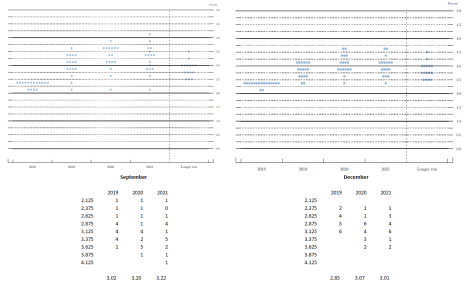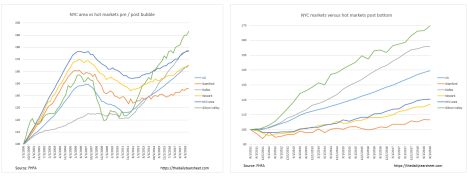Vital Statistics:
| Last | Change | |
| S&P futures | 2510 | 24 |
| Eurostoxx index | 337.45 | 1.25 |
| Oil (WTI) | 46.4 | 1.01 |
| 10 year government bond yield | 2.73% | |
| 30 year fixed rate mortgage | 4.60% |
Stocks are higher as close the books on 2018. Bonds and MBS are down small.
Today should be relatively quiet as we have an early close in the bond market and no economic data to speak of. Economic data has been delayed due to the government shutdown, but so far it looks like BLS is still working so we should get the jobs report on Friday.
Pending home sales dropped 0.7% in November, according to NAR. YOY, activity was down 7.7%. Lawrence Yun, NAR chief economist, said the current sales numbers don’t fully take into account other data. “The latest decline in contract signings implies more short-term pullback in the housing sector and does not yet capture the impact of recent favorable conditions of mortgage rates.” The government shutdown is not going to help things going forward, as the inability to get flood insurance will probably affect some 40,000 home sales.
People are looking at 2019 and largely assuming that it will be a carbon copy of 2018 with respect to the mortgage business. That is probably a safe bet, however there is one big difference: if you believe the Fed Funds futures are correct, the Fed is out of the way. For example, Freddie Mac anticipates that the 30 year fixed rate mortgage is going to be 5.1% and originations are going to increase slightly to 1.69MM. When that forecast was made (in August of 2018), people were thinking we would probably have two more hikes in 2019. I suspect that the forecasts for 2019 have yet to factor in a Fed that does nothing further.
Where will rates go, then? I suspect that unless the data changes markedly, they probably go nowhere. If we see a dramatic drop in GDP (say Q1 GDP drops to 1%) then rates are going lower as the yield curve will probably invert. If we see a dramatic jump in inflation (say Q1 core PCE hits 3%) then the Fed might hike again and we should see higher mortgage rates. However, the most likely bet is that they kind of meander around in the mid 4%s for the year.
Where will home prices go? Most forecasts assume that home price appreciation will slow this year, and that is probably a solid bet. Home prices have become largely untethered from incomes again and will probably lack much impetus to move higher unless wages get a strong boost. There is a housing shortage that needs to be addressed, but that doesn’t necessarily mean SFR construction – the needs are at the lower price points, and that means more multi-fam, not necessarily SFR. There is a glut of high priced properties as well.
I suspect that even if rates do move lower, there has been enough prepayment burnout to prevent any sort of meaningful refi boom. Volume is going to have to come from additional products (non-QM etc) and new construction. Volume probably won’t be as bad as 2018, but it won’t be better than 2017 either. Margin compression will probably ease up as competition decreases and marginal players exit the business.
Filed under: Economy, Morning Report | 12 Comments »






